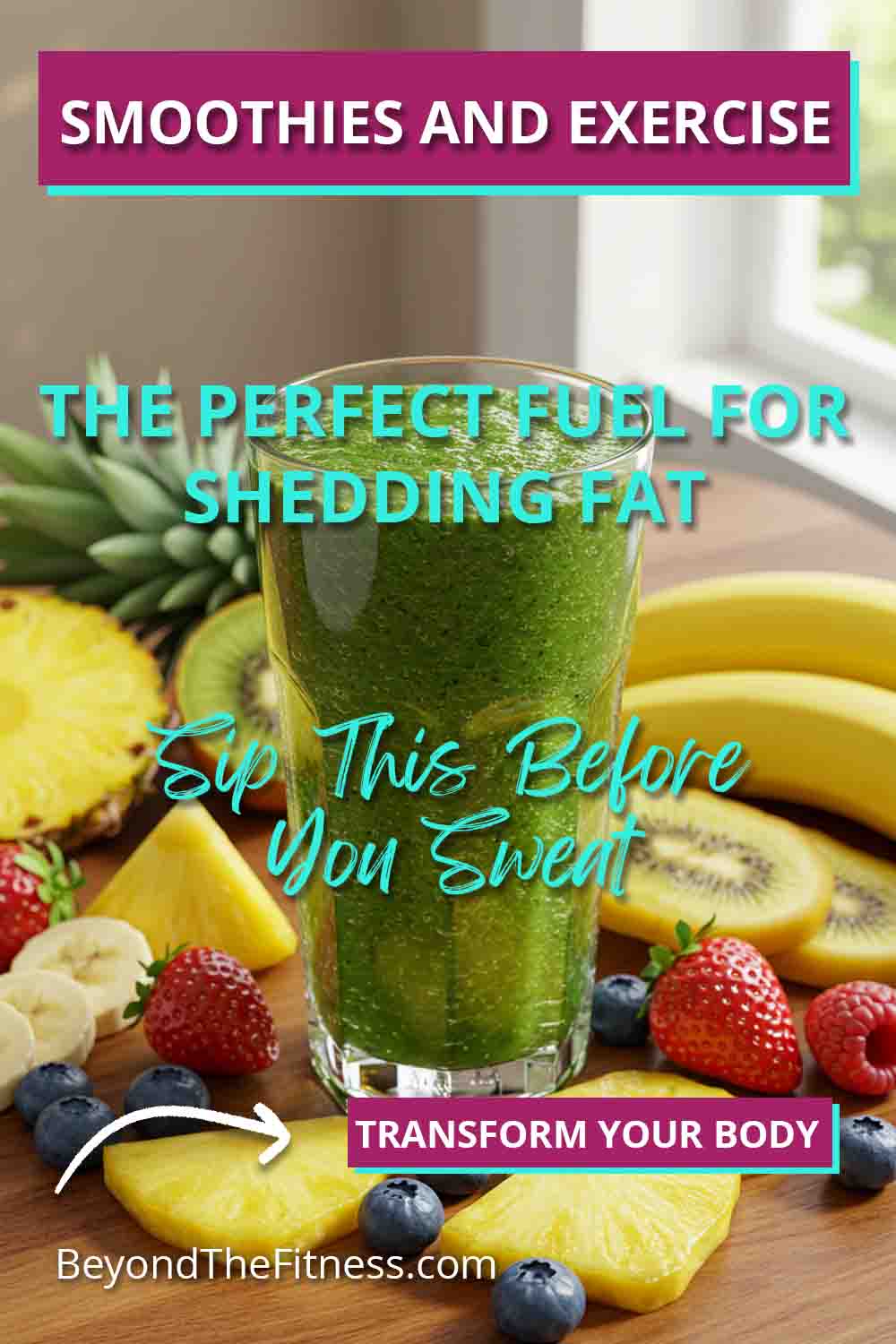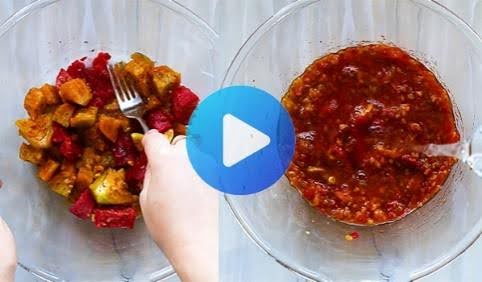Losing fat can feel like a big puzzle. You hear about diets. You hear about workouts. Sometimes it gets confusing. What really works. How can we make it simpler. I believe combining smart eating with the right exercise is key. And one simple tool I love for this is the smoothie. Smoothies, when made right, can be amazing fuel for your body, especially when you’re working out to shed fat.
Let’s talk about how this all fits together. Think of your body like a car. It needs fuel to run. Food is our fuel. Exercise is like driving the car. It uses up that fuel. Fat is like extra fuel stored in the tank for later. To lose that stored fat, we need to use a bit more fuel than we put in each day. This doesn’t mean starving yourself. It means choosing good quality fuel and getting your body moving.
Understanding How Your Body Loses Fat
Fat loss seems mysterious sometimes. But it boils down to something called energy balance. Your body uses energy, measured in calories, for everything. Breathing, walking, thinking, sleeping, and of course, exercising. You get energy from the food and drinks you consume.
If you eat and drink more calories than your body uses, it stores the extra energy. Mostly, it stores it as body fat. This was helpful for our ancestors when food wasn’t always available. But today, food is usually easy to find. So, we often store more than we need.
To lose fat, you need to flip this around. You need your body to use slightly more calories than you take in. This is called a calorie deficit. When this happens, your body needs to find energy somewhere else. So, it starts breaking down stored body fat to use as fuel. It’s like finally using the gas in that extra tank.
It sounds simple. Eat less, move more. But it’s a bit more complex. Your metabolism plays a big role. Metabolism is the name for all the processes your body does to keep you alive and turn food into energy. Some people have faster metabolisms, meaning they burn more calories just resting. Exercise helps boost your metabolism. Building muscle also helps because muscle burns more calories than fat, even when you’re not moving.
Hormones matter too, especially for women. Hormones are like messengers in your body. They control things like hunger, fullness, and where you store fat. Things like stress and sleep can affect these hormones. Eating balanced meals and managing stress helps keep hormones working properly, which supports fat loss. It’s not just about calories in and calories out. It’s about creating a healthy internal environment where your body feels safe to let go of stored fat.
Exercise: Your Fat-Burning Friend
Exercise is super important for losing fat. It does two main things. First, it burns calories while you’re doing it. Second, it helps build muscle and improve your metabolism, so you burn more calories even when you rest.
There are different kinds of exercise, and both are helpful.
Cardio Exercise
Cardio is short for cardiovascular exercise. This is any activity that gets your heart pumping and makes you breathe harder. Think running, jogging, swimming, cycling, dancing, or brisk walking.
Cardio is great for burning calories directly. A good cardio session can use up a significant amount of energy. It also strengthens your heart and lungs. How much cardio should you do. Aim for at least 150 minutes of moderate-intensity cardio per week. That could be 30 minutes, five days a week. Or you could do 75 minutes of vigorous-intensity cardio. Moderate means you can talk but not sing. Vigorous means you can only say a few words before needing a breath.
Consistency is key. Finding cardio you enjoy makes it easier to stick with. Maybe it’s dancing in your living room, hiking outdoors, or joining a class.
Strength Training
Strength training involves working your muscles against resistance. This could be lifting weights, using resistance bands, using weight machines, or even using your own body weight (like push-ups or squats).
Strength training might not burn as many calories during the workout compared to intense cardio. But its long-term effects are amazing for fat loss. When you do strength training, you build muscle. Muscle tissue is metabolically active. This means it burns more calories at rest than fat tissue does. The more muscle you have, the higher your resting metabolic rate. This makes it easier to create that calorie deficit needed for fat loss.
For women, please don’t worry about getting “bulky” from lifting weights. It’s actually quite hard for women to build huge muscles because of hormonal differences compared to men. Strength training usually leads to a leaner, more toned look. It also strengthens bones, which is really important as women get older.
Aim for at least two strength training sessions per week, working all major muscle groups (legs, hips, back, abdomen, chest, shoulders, arms).
You Might Be Interested In: Learning more about The Complete Smoothie Detox & Weight Loss Program
Combining Cardio and Strength
The best approach for fat loss often involves combining both cardio and strength training. Cardio burns calories during the workout, while strength training builds muscle to boost your metabolism long-term. You could alternate days, do cardio after strength training, or find ways to mix them, like in circuit training.
Why Smoothies Are Great for Your Goals
Okay, so we know exercise is important. Where do smoothies fit in. Smoothies can be fantastic tools for fat loss when you make them correctly. Here’s why I like them:
- Nutrient Powerhouses: You can pack a lot of nutrition into one glass. Fruits, vegetables, protein sources, healthy fats, fiber – things your body needs, especially when active. It’s an easy way to get vitamins and minerals.
- Feeling Full: Smoothies, especially those with protein and fiber, can help you feel full and satisfied. This can prevent overeating later. Blending fruits and veggies breaks down some of the fiber, but much of it remains, helping with digestion and fullness.
- Super Convenient: Let’s be honest, life gets busy. Whipping up a smoothie takes just a few minutes. It’s perfect for a quick breakfast, a recovery drink after a workout, or even a light meal replacement when you’re short on time.
- Controllable Calories: You control exactly what goes into your smoothie. This makes it easier to manage your calorie intake compared to grabbing processed snacks or restaurant meals.
- Hydration Helper: Smoothies often have a liquid base like water, milk, or plant-based milk, contributing to your daily fluid needs. Hydration is crucial for metabolism and overall health.
The key is how you make them. A smoothie loaded with sugary juices, sweetened yogurts, and tons of high-calorie additions can easily become a calorie bomb that works against your fat loss goals. We want nutrient-dense, balanced smoothies.
Fueling Up: Pre-Workout Smoothies
What you eat before exercise can make a difference in your performance and energy levels. You want fuel that’s easy to digest and provides sustained energy. A pre-workout smoothie, consumed about 60-90 minutes before exercise, can be a great option.
What should go in a pre-workout smoothie. Focus on carbohydrates for energy and a little bit of protein.
- Carbohydrates: These are your body’s preferred energy source. Choose easily digestible carbs. Fruits like bananas, berries, mangoes, or peaches are excellent choices. Oats (raw or cooked and cooled) can also provide sustained energy.
- Protein: A small amount of protein can help prevent muscle breakdown during exercise. Don’t overdo it, as too much protein can sit heavy. A scoop of protein powder (whey, casein, or plant-based), a bit of Greek yogurt, or silken tofu works well.
- Liquid Base: Water, unsweetened almond milk, coconut water, or low-fat milk are good choices. Avoid sugary juices.
- Limit Fat and Fiber: While healthy fats and fiber are important overall, having too much right before a workout can slow digestion and potentially cause stomach discomfort. Keep additions like nuts, seeds, and large amounts of greens minimal in your pre-workout blend.
Pre-Workout Smoothie Ideas:
- Banana Berry Boost: 1 banana, 1/2 cup mixed berries (frozen), 1/2 scoop vanilla protein powder, 1 cup unsweetened almond milk.
- Mango Ginger Zing: 1 cup frozen mango chunks, 1/4 cup plain Greek yogurt, 1 tsp grated ginger, 1 cup water or coconut water.
- Peachy Keen Energy: 1 cup frozen peaches, 1/4 cup rolled oats, 1/2 scoop plain or vanilla protein powder, 1 cup low-fat milk or water.
Listen to your body. If you’re exercising first thing in the morning, you might prefer something smaller or might even exercise fasted (on an empty stomach) if it feels okay for you. Experiment to see what works best.
Recovering Right: Post-Workout Smoothies
After you exercise, your body is ready to refuel and repair. Your muscles have worked hard, and their energy stores (called glycogen) are depleted. Providing the right nutrients soon after your workout, ideally within 30-60 minutes, can help speed up recovery, reduce muscle soreness, and support muscle growth and repair. This is where a post-workout smoothie shines.
What’s needed after a workout. Protein and carbohydrates are the stars here.
- Protein: Essential for repairing the tiny muscle tears that happen during exercise (which is how muscles get stronger). Aim for around 20-30 grams of high-quality protein. Whey protein is absorbed quickly, making it popular post-workout. Casein is slower digesting. Plant-based options like soy, pea, rice, or hemp protein are also effective. Greek yogurt, cottage cheese, or silken tofu are food-based options.
- Carbohydrates: Needed to replenish those muscle glycogen stores. Fruits are great sources. Bananas, berries, pineapple, and mango work well. The natural sugars in fruit, combined with fiber, help refuel muscles effectively. You could also add oats.
- Liquid Base: Water, milk (dairy or plant-based) work well. Milk provides extra protein and carbs.
- Healthy Fats & Fiber (Optional): While protein and carbs are the priority, adding a small amount of healthy fat (like a tablespoon of chia seeds, flax seeds, or almond butter) or some greens (like spinach or kale) is fine post-workout and adds extra nutrients.
Post-Workout Smoothie Ideas:
- Classic Protein Power: 1 scoop chocolate or vanilla protein powder, 1 banana, 1 tbsp peanut butter or almond butter, 1 cup milk (dairy or unsweetened plant-based), handful of spinach (you won’t taste it).
- Green Recovery Machine: 1 scoop plain or vanilla protein powder, 1 cup frozen pineapple chunks, 1 large handful of kale or spinach, 1 tbsp chia seeds, 1 cup coconut water or water.
- Berry Muscle Mend: 1 cup plain Greek yogurt or 1 scoop berry-flavored protein powder, 1 cup mixed berries (frozen), 1/2 banana, 1 cup water or almond milk.
These smoothies provide the nutrients your body craves after a good workout, helping you recover faster and get ready for your next session.
Top Smoothie Ingredients for Fat Loss
Beyond the basics of pre-and post-workout timing, certain ingredients can give your fat loss efforts an extra edge when included in your regular smoothies.
- Protein: We’ve talked about protein for workout recovery, but it’s crucial for fat loss in general. Protein is very satiating, meaning it helps you feel full longer. It also requires more energy for your body to digest compared to fats or carbs (this is called the thermic effect of food). Good sources: Protein powders (whey, casein, soy, pea, hemp), Greek yogurt, cottage cheese, silken tofu.
- Fiber: Fiber is another fullness champion. It slows down digestion, keeps blood sugar stable, and feeds the good bacteria in your gut. Most fruits and vegetables are good sources. Additions like chia seeds, flax seeds, psyllium husk, and oats are fiber powerhouses. Aim for at least 5 grams of fiber per smoothie.
- Leafy Greens: Spinach, kale, romaine, Swiss chard – these are packed with vitamins and minerals but very low in calories. They add bulk and nutrients without significantly increasing the calorie count. Spinach has a very mild flavor and is easy to hide.
- Berries: Strawberries, blueberries, raspberries, blackberries are lower in sugar compared to many other fruits but high in fiber and antioxidants. Frozen berries make smoothies thick and cold.
- Healthy Fats: Fats are necessary for hormone production and absorbing certain vitamins. They also contribute to satiety. Choose unsaturated fats found in avocado, nuts (almonds, walnuts), seeds (chia, flax, hemp), and nut butters. Just be mindful of portions, as fats are calorie-dense. A tablespoon or two is usually enough.
- Green Tea: Try using cooled brewed green tea as your liquid base. Green tea contains compounds like EGCG that have been linked to a modest boost in metabolism and fat burning.
- Spices: Cinnamon can help with blood sugar control. Ginger and cayenne pepper may have slight metabolism-boosting effects. They also add flavor without calories.
Building Your Best Fat-Loss Smoothie
Think of building a smoothie like assembling a healthy meal in a glass. Here’s a simple formula:
- Choose Your Liquid Base (about 1 cup): Water, unsweetened almond milk, unsweetened soy milk, low-fat dairy milk, cooled green tea, coconut water.
- Pick Your Protein (aim for 15-30 grams): 1 scoop protein powder, 1/2 – 1 cup Greek yogurt, 1/2 cup cottage cheese, 1/2 block silken tofu.
- Add Healthy Fats (1-2 tablespoons): Chia seeds, flax seeds, hemp seeds, almond butter, peanut butter, avocado (1/4 to 1/2).
- Load Up on Fiber & Greens (1-2 handfuls/tablespoons): Spinach, kale, romaine, frozen cauliflower rice (adds creaminess), chia seeds, flax seeds, oats.
- Include Fruit (1/2 – 1 cup): Berries, banana (use 1/2 for lower sugar), peaches, mango, pineapple. Frozen fruit makes it thicker.
- Flavor Boosters (Optional): Cinnamon, ginger, vanilla extract, unsweetened cocoa powder, a squeeze of lemon or lime.
Blend everything until smooth. If it’s too thick, add more liquid. If it’s too thin, add more frozen fruit, ice, or a thickening agent like chia seeds.
Smoothie Mistakes That Hinder Fat Loss
Smoothies can be amazing, but they can also turn into sneaky sources of excess sugar and calories if you’re not careful. Avoid these common mistakes:
- Too Much Fruit/Sugar: While fruit is healthy, too much can load your smoothie with sugar and calories. Stick to about 1 cup or less, focusing on lower-sugar options like berries. Be especially wary of fruit juices, sweetened yogurts, honey, maple syrup, or agave – these add sugar quickly.
- Not Enough Protein: Protein is key for fullness and muscle support. A smoothie made of just fruit and juice won’t keep you satisfied for long. Always include a good protein source.
- Not Enough Fiber: Fiber also boosts satiety. If your smoothie lacks greens, seeds, or oats, you might feel hungry again soon after drinking it.
- Going Overboard with Healthy Fats: Nuts, seeds, avocado, and nut butters are healthy, but they are high in calories. Measure your portions – a little goes a long way. One or two tablespoons is a good guideline.
- Making It Too Big: A huge smoothie can easily contain more calories than a regular meal. Pay attention to your portion sizes. Aim for a smoothie that fits within your daily calorie goals, typically between 300-500 calories if it’s replacing a meal.
- Buying Pre-Made Smoothies: Store-bought smoothies often contain hidden sugars, preservatives, and lower-quality ingredients. Making your own at home gives you complete control.
Fitting Smoothies and Exercise Into Your Life
Consistency is everything when it comes to fat loss. How can you make smoothies and exercise a regular part of your routine.
- Plan Ahead: Decide when you’ll exercise and when you’ll have your smoothies. Schedule workouts like important appointments.
- Prep Smoothie Ingredients: Wash and chop fruits and veggies on the weekend. Portion them into freezer bags (e.g., 1 cup berries, handful spinach, 1 tbsp chia seeds). In the morning, just grab a bag, add liquid and protein, and blend.
- Find Workouts You Enjoy: If you hate running, don’t force yourself. Try dancing, swimming, team sports, hiking, or weightlifting classes. You’re more likely to stick with something you like.
- Start Small: If you’re new to exercise, begin with shorter workouts and gradually increase the duration and intensity. Same with smoothies – start with simple recipes.
- Listen to Your Body: Pay attention to hunger and fullness cues. Some days you might need a bigger smoothie, other days smaller. Adjust based on your activity level and appetite. Don’t force yourself to drink a smoothie if you’re not hungry.
- Be Patient: Fat loss takes time. There will be ups and downs. Focus on building sustainable healthy habits rather than looking for quick fixes. Celebrate non-scale victories like having more energy, clothes fitting better, or lifting heavier weights.
More Than Just Smoothies and Exercise
While smoothies and exercise are powerful tools, they are part of a bigger picture for successful and sustainable fat loss. Don’t forget these other important factors:
- Overall Diet: Smoothies are great, but what you eat the rest of the day matters just as much. Focus on whole, unprocessed foods: lean proteins, lots of vegetables, whole grains, and healthy fats. Limit processed foods, sugary drinks, and excessive unhealthy fats.
- Hydration: Drink plenty of water throughout the day. Water is essential for metabolism, helps control appetite, and keeps everything running smoothly.
- Sleep: Aim for 7-9 hours of quality sleep per night. Poor sleep messes with hunger hormones (making you hungrier), increases cravings for unhealthy foods, and reduces your energy for exercise.
- Stress Management: Chronic stress can lead to increased cortisol levels, a hormone that can promote fat storage, especially around the belly. Find healthy ways to manage stress, like meditation, yoga, deep breathing, spending time in nature, or hobbies you enjoy.
Combining regular exercise you enjoy with smartly crafted smoothies can be a delicious and effective strategy to fuel your body and support your fat loss journey. Remember to focus on whole ingredients, balance your nutrients, and listen to your body’s signals.
Related YouTube Video
Final Thoughts
Making changes takes effort, but focusing on positive additions like tasty smoothies and energizing workouts can make the process feel less like deprivation and more like self-care. Be kind to yourself, stay consistent, and enjoy the journey to a healthier, stronger you. You have the power to fuel your body well and achieve your goals.







